Remember our article on retrograde analysis? The subject sounds daunting, but it is a very enjoyable form of recreational chess, requiring humour and lateral thinking. Retrograde problems come in different forms, and the master of the genre is Raymond Smullyan, who wrote a series of books entitled "Chess mysteries of Sherlock Holmes". They appeared in Hutchinson around 1980. This is one of his most famous problems, which we published at Christmas in 2001:
Raymond Smullyan, Manchester Guardian 1957
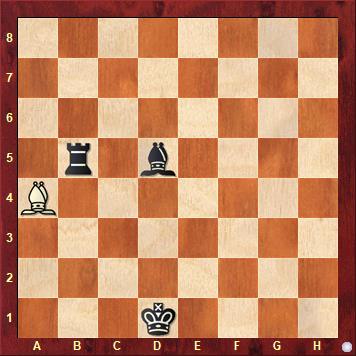
In the above position White has just removed his king from the board. The task for solvers it to determine from which square it was taken, and what were the last two moves? Think about it – the solution is given at the end of this article.
Günther Weeth, Stuttgarter Zeitung 2003
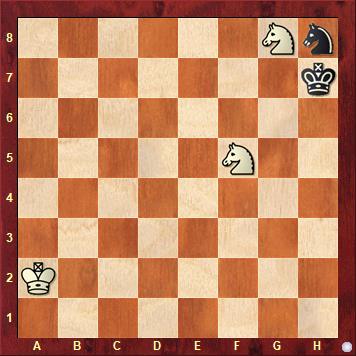
This is a nice and simple retro problem to start with: White has just played, but takes his move back and instead delivers mate in one. Try to find the position one move earlier, one that allows White to deliver mate instead. There is only one possible position that can solve the problem. If you cannot think of it you will find the solution at the end of this article.
Here's one by a dear and loyal friend, who sent it to me for Christmas a few years ago:
Pal Benko: New Year 2012

White takes back his last move and instead delivers mate in two moves
I will not be giving the solution to this problem – and politely request that our readers should not post it in the feedback section below. Let people have some fun working it out themselves.
The following twin retractors begin with the simplest position imaginable, and still are none too easy. Please spend some time thinking about it before peeking at the solution in our replay board at the bottom of the page.
Frederick Baird/Julio Sunyer, 1910/1923
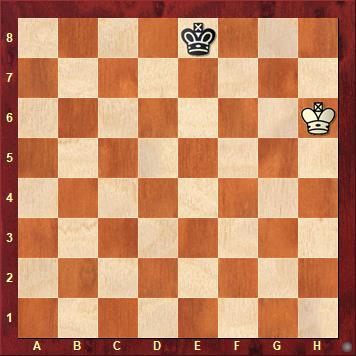
White and then Black retract one move each, after which Black helps White to mate him (helpmate in one). Twin: the white king is on h5, same task.
The next is one by problem composer Werner Keym, and is taken from his wonderful little book Chess Problems out of the box. It costs just €10 / US $12 (plus €2/$4 for postage) – outrageously good value for the price. It is for more advanced solvers.
Werner Keym, Stuttgarter Zeitung 2016
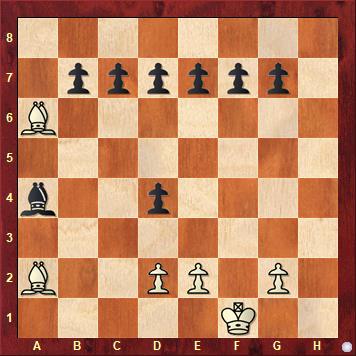
Add as many pieces as legally possible
In the above position some pieces have fallen off the board. Can you replace them correctly? That looks like a perfectly outrageous task – how can you deduce which pieces are missing and put them on the squares they were standing on? Well, it is actually possible, using pure logic.
Here's the solution: the white bishop on f1 has never moved, so it must have been captured on its original square. The two light-squared white bishops must therefore be the result of pawn promotions. This had to have happened on g8, and was only possible if the white pawns on f2 and h2 captured four times – twice for the f-pawn to get to the h-file, and twice for the pawns to promote to light-square bishops on g8. In the process they have taken two rooks and two knights.
Now let us look at the black bishop on a4. This could not have come from f8, since that bishop never moved, so it must be the result of a black promotion on b1 or d1. The black pawn on d4 has to have come from a7, capturing three times, so the bishop promotion was executed by the pawn on h7, which had to have captured six times. That means that six white pieces (not the bishop on f1) and three pawns were captured. Two white pawns, f2 and h2, were needed for the bishop promotions (see above), and that accounts for all the white men that are not in the diagram. So it was only black pieces that fell off the board, the ones that could never have moved. You can replace them on the board, which must have looked like this:
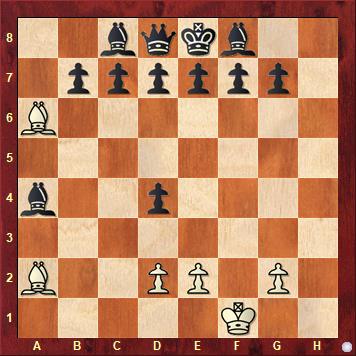
Amazing and compelling. Here's a final interesting chess problem:
H. Hjorth, Skakbladet 1911

Mate in three moves
The solution envisioned by the composer is neat and simple. However after publication experienced solvers pointed out that in the above position Black could not have made the last move. So it had to be Black to play. But that doesn't ruin the problem: even if Black makes the first move White can mate in three. See it?
Solutions
Did you get it? This is the position from which the first diagram resulted. The moves are 1.c4 bxc3+ e.p. 2.Kxc3+ (enter them on the diagram). So the white king was taken from c3.
Solution to the problem by Günther Weeth: White took back the move Pf7xNg8N (pawn f7 takes a black knight on f8 and promotes to a knight). Instead he plays Pf7-f8N, which mates Black. The piece on g8 has to be a black knight. If it was a bishop or a queen White could not move his pawn to f8 (because of the check to the wKa2), and it could not be a black rook because then f8N+ would be met by ...Rxf8. QED.
Replay the solutions































